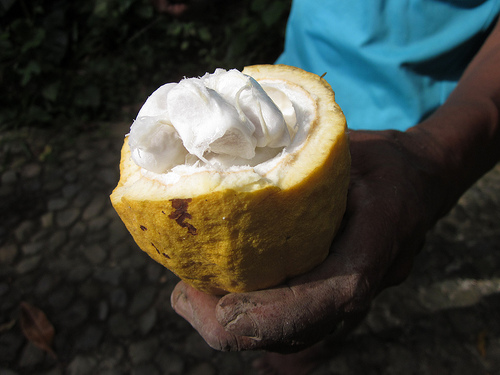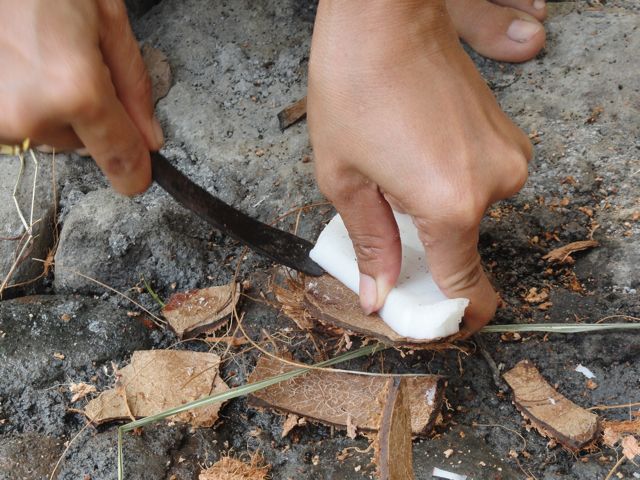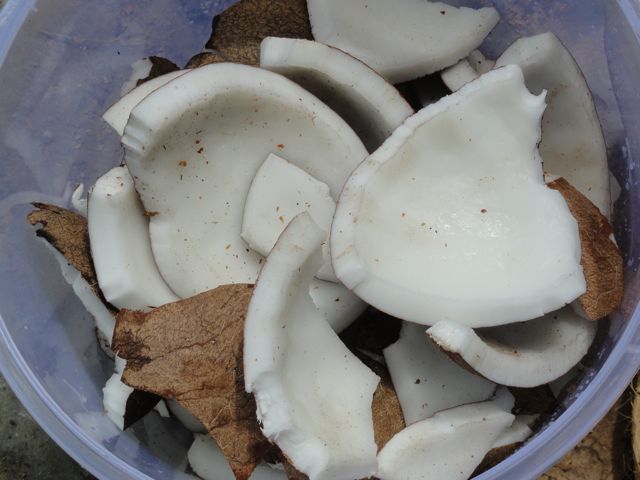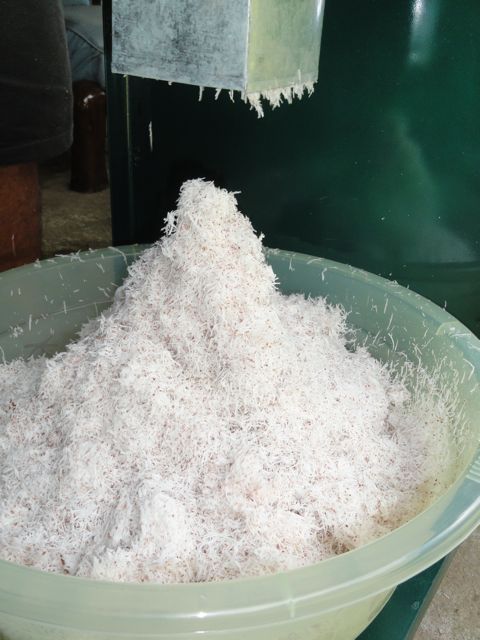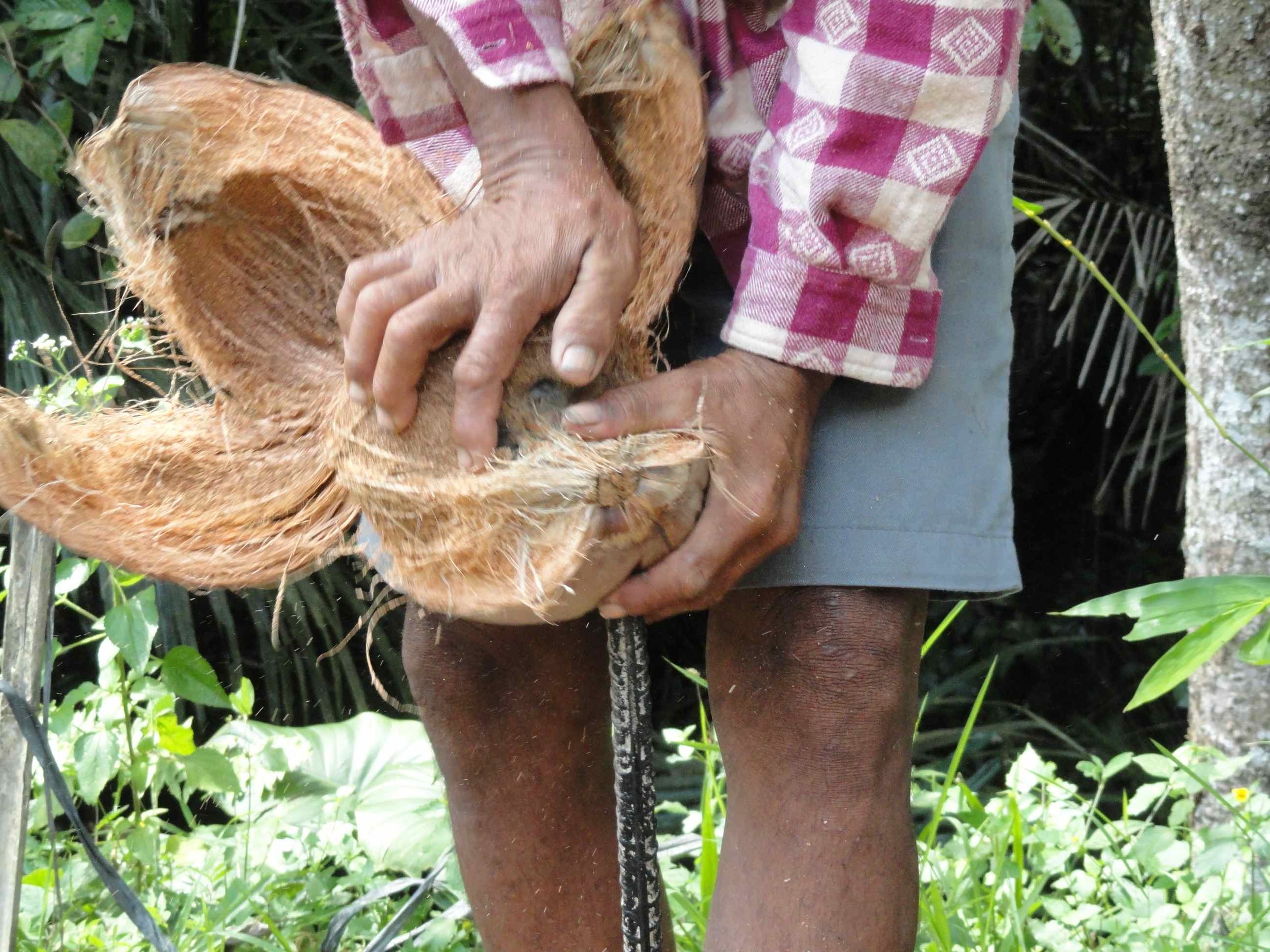Creating Indigenous Microorganisms (IMOs)
/At Jiwa Damai we practice biological organic gardening. We clearly do not use any type of chemicals to fertilize our lands. We use effective microorganisms for fertilization. Here we show you the Balinese way how to produce indiginous microorganisms. This is a fantastic technique !
Using cane sugar and cooked rice closed in a hollow bambu stick which is burried in the compost produces a flavourful yeast type fungus which is then mixed with the earth.
New coconut house
/A new addition to our Permaculture Garden and Retreat Centre is a building which is going to be used to produce our own Bali Virgin Coconut Oil and honey, as well as any other products from our permaculture garden we may develop in the future.
Organic cooking: Kare Tofu
/Today we want to share our favourite Balinese Tofu recipe with you. Tofu or bean curd is a food made by coagulating soy milk and then pressing the resulting curds into soft white blocks. Tofu has very little flavor or smell on its own, so it can be used either in savory or sweet dishes, and it is often seasoned or marinated to suit the dish. Tofu contains a low amount of calories, relatively large amount of iron, and little fat. Depending on the coagulant used in manufacturing, the tofu may also be high in calcium and/or magnesium.
At Jiwa Damai we serve health-conscious cuisine for body and soul. We only use local fresh farm products, some grown on our land. In combining our ingredients, we pay attention to how the valuable substances in the food complement each other in order to create a balanced and vitalizing eating experience. Our talented cook Astri likes to prepare various Tofu dishes. This one is sooo yammi....
Recipe for Kare Tofu:
- 2 pieces of lemongrass, pounded with mortar & pestle
- 1 package firm tofu
- Approx. 4 leaves Daun Salam, an Indonesian Bay-Leaf. If you cannot attain Daun Salam you can substitute with ordinary bay-leaves, though the taste will be different.
- 4 pieces of Kemirie Nuts. This Indonesian nut looks like a large hazelnut. Astri uses it to thicken and flavor the Kare Tofu sauce. You can substitute with Macadamia or Brazil nuts.
- 2 red onion
- 4 cloves garlic
- 1 small piece fresh turmeric (peeled an ground)
- A pinch of Ketumbar, or coriander spice.
- 1 teaspoon sugar
- ½ block veggie stock
- 1 package of Santan Kelapa (65 ml) or Coconut milk, specifically the extract from the grated coconut flesh
- 1 cup water
Preparation: First, make the sauce. Add the Kemirie, chopped garlic, minced red onion, turmeric, Ketumbar and sugar together in blender (a bullet is useful here).
Cut tofu into triangles. Heat a couple tablespoons of vegetable oil in the wok enough to coat the pan and give partially cover tofu. Once hot, add tofu. Give the lemongrass a couple of pounds with mortar and pestle and then add the entire stalk into the skillet. Add Daun Salam. Let simmer for 5 to 10 minutes. Add sauce and stir. Next, add water. The mixture should look almost soupy. Add vegetable sock. Bring the tofu and sauce to a boil for about 15 minutes. Reduce heat, allow to continue cooking and reducing for 2 or 3 minutes. Take off heat and add Santan Kelapa. Stir and let stand. Give sauce adequate time to cool and thicken around the tofu.
Serve warm, with rice.
Enjoy your meal!
Our Balinese Hand-Crafted Virgin Coconut Oil - How To: Step 3
/Read step 1 here and step 2 here. Once the coconut flakes have been produced, we Fresh spring water is added to the flakes and the liquid then extracted by hand. It is then filtered thru a fine piece of fabric and the water is allowed to settle on the bottom of the container. This process of filtering is done 12 times to produce the delicious virgin coconut oil, a health food and natural medicine.
Unlike the cooking coconut oil, which is extracted by heat, the virgin oil never exceeds the temperature of 30 degrees.
Now that you've made it to step 3, we'd love to hear about your experience in using this method. Please comment below and share - we'd love to connect with you!
Our Balinese Hand-Crafted Virgin Coconut Oil - How To: Step 2
/In our previous post, we began guiding you in how to produce virgin coconut oil in a step by step process. Be sure to check out step 1 here! Once the outer and inner shells of the coconut have been split open, the coconut meat is carefully extracted by hand from the inner hard shell. The fresh meat is then ground into coconut flakes with an electric grinder, fed by hand.
Keep following along with step 3 here.
Have you tried this step? How did it work out for you? Comment below and let us know!
Back to the real roots
/Our garden harbours very powerful roots in the earth. Tapioca the large root you see is used in many Indonesian and Balinese dishes. It can be made into dumplings and chips. The leaves are used as spinach on Bali .
The Taro, the small red roots can be used like potatoes. They are quite starchy.
Both, Tapioca and Taro, carry many nutrients and are delicious to eat.
Our Balinese Hand-Crafted Virgin Coconut Oil - How To: Step 1
/To produce virgin Balinese coconut oil, the coconuts must first be totally ripe.
Tip: The young green coconut is full of delicious water. The dark brown one has ripened and is full of rich white coconut meat. From this meat the oil will be produced.
The outer shell is opened and its small, tan colored fibers become visible. This shell can be used for many different purposes. For example, you could get crafty and make your own floor mat or use the shells simply as firewood.
Once the outer shell has been opened, you'll find a smaller shell where the coconut meat is located.
The inner harder shell needs to be split open with a large, heavy knife to reach the rich meat. This shell is very hard, so a sturdy knife is necessary.
The meat can be used for coconut flakes, added to smoothies, dehydrated coconut chips, or oil production for a wonderful boost in essential vitamins and nutrients.
Be sure to read step 2 here and step 3 here!
Have you ever felt inspired to produce your own coconut oil? Have you tried this method? If so, how did it work out? If not, what other methods have you used?
Comment below and let us know!
Permaculture on Bali - Our plant nursery
/My name is Ketut and I am the head gardener here at Jiwa Damai. I am responsible for the huge organic permaculture garden with all the variety of tropical flowers, plants and trees.
Today I want to show you my nursery, where we grow the small plants out of seeds. Once the plants are well nurtured and big enough, we put them out in the open field.
The nursery has a roof, to shelter the small plants from the heavy rains. Without a roof they would regularly be destroyed by the down-pouring rains.
We organize guided tours through the extensive organic permaculture garden - stop by and have a look for yourself.
See you soon at Jiwa Damai !


